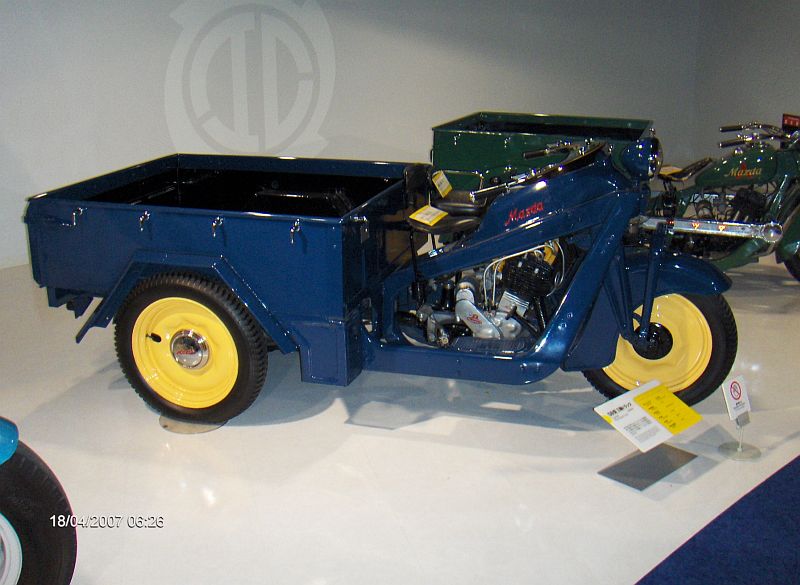Description
The Mazda GB was one of the earliest passenger cars produced by Mazda (then known as Toyo Kogyo), representing an important transitional step in the company’s evolution from a builder of three-wheeled trucks to a full automobile manufacturer. Produced in the early 1960s and sold primarily in Japan, the GB was a small, practical, conservative saloon designed to compete in the rapidly expanding compact-car market. Although largely unknown today outside specialist circles, it played a key role in establishing Mazda’s credibility as a maker of conventional four-wheeled automobiles just before the arrival of the more famous Familia models and long before Mazda became synonymous with rotary engines.
The Mazda GB was introduced in 1960 as the successor to the short-lived Mazda DA. It was powered by a modest 1.0-litre, four-cylinder OHV engine producing around 30–35 horsepower, depending on the variant. The engine prioritised simplicity, durability and low running costs rather than performance. Power was delivered through a three-speed manual gearbox, and the car was capable of achieving everyday city speeds comfortably, though it was not intended for high-speed touring. This drivetrain made the GB approachable and economical in the domestic Japanese market, where efficiency and reliability were increasingly valued as private car ownership grew.
The chassis design was straightforward and rugged, featuring a traditional ladder-frame construction carried over from Mazda’s light-commercial vehicle experience. Suspension used independent front wishbones with coil springs and a live rear axle with leaf springs, a layout that provided predictable handling and a compliant ride on the rougher roads of early-1960s Japan. Steering was light and direct at low speeds, making the car easy to manoeuvre in crowded urban conditions, which was an important quality for a small family saloon of its period.
The GB’s styling was conservative but modern enough to feel contemporary at the time. It featured a boxy, upright saloon silhouette with clean lines, a simple horizontal grille and round headlamps. The proportions were tidy and efficient, emphasising interior space within a compact footprint. Although not as flamboyant as some of its Western contemporaries, the GB had a practical charm, reflecting Mazda’s pragmatic approach during its early years building passenger cars.
The interior was functional and straightforward, designed around utilitarian simplicity rather than luxury. Seating was trimmed in vinyl, instrumentation was basic, and controls were laid out in an intuitive, no-nonsense fashion. Despite its simplicity, the car provided comfortable accommodation for four passengers and was regarded as a sensible, affordable and reliable family car at a time when Japanese households were beginning to purchase their first private vehicles.
On the road, the Mazda GB delivered steady, predictable performance. Its small engine worked efficiently in city driving, and the car’s compact dimensions and tight turning radius made it easy to handle. Ride comfort was decent thanks to the soft suspension tuning, and overall refinement was acceptable for its class and era. It was not fast, but it was robust, economical and easy to maintain — qualities that helped build Mazda’s reputation in the mainstream automotive market.
Sales volumes for the GB were modest, as the model was quickly overshadowed by the more advanced and successful Mazda Familia (323) line that followed in 1963. Nevertheless, the GB served as an essential developmental step, allowing Mazda to refine its manufacturing processes, improve its four-wheel passenger-car engineering and establish a competitive foothold before entering wider export markets.
Today, the Mazda GB is a very rare vehicle. Few examples have survived due to its age, early production era and limited export reach. Yet historically, it is an important early chapter in Mazda’s story — a car that laid the foundation for the company’s later success with compact saloons, sporty coupes and eventually rotary-powered icons like the Cosmo, RX-3 and RX-7. Although largely forgotten, the GB remains a key milestone in Mazda’s transformation into a global automobile manufacturer.


